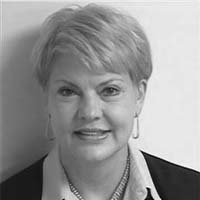Question
What exactly is cul-de-sac resonance and what causes it?
Answer
Cul-de-sac resonance occurs when the sound energy enters a cavity of the vocal tract, but is blocked at the exit of cavity’s normal outlet. The sound is therefore trapped in a blind pouch. Because some of the sound is absorbed by the soft tissues, the speech/voice is perceived as muffled and low in volume. Like hyponasality, cul-de-sac resonance is due to obstruction, but in this case, the place of obstruction is at the cavity’s exit point rather than at the entrance or within the nasal cavity.
There are three types of cul-de-sac resonance, depending on the location of the blockage (Kummer, 2020a). All are defined by blockage at the cavity’s exit point. As such, oral cul-de-sac resonance occurs when the sound is partially blocked from exiting the oral cavity during speech. This can occur due to microstomia (a small mouth opening). It is also what is heard with “mumbling” or speaking without opening the mouth normally. To imitate oral cul-de-sac resonance, say oral sentences with a very small mouth opening. Nasal cul-de-sac resonance occurs when the sound is partially blocked from exiting the nasal cavity during speech. This is most noticeable when there is a combination of VPI (which would otherwise cause hypernasality), but also a blockage in the anterior part of the nose or nares. Nasal cul-de-sac resonance is commonly found in individuals with a history of cleft lip and palate, which can cause both VPI and either a deviated septum (due to a unilateral cleft lip) or a stenotic naris (due to scarring after a cleft lip repair). Nasal cul-de-sac resonance can be simulated by imitating hypernasality while closing one or both nostrils. Pharyngeal cul-de-sac resonance occurs when the sound is blocked from exiting the oropharynx during speech. This is typically caused by enlarged tonsils that block the oropharyngeal opening (exit of the pharynx). As with other types of cul-de-sac resonance, this blockage causes speech to be low in volume and muffled in quality. Although enlarged tonsils are the most common cause of pharyngeal cul-de-sac resonance, it can also occur due to scar tissue or other forms of obstruction on the pharyngeal wall of the hypopharynx or oropharynx. To imitate pharyngeal cul-de-sac resonance, produce oral sentences with your closed fist over your mouth.
This Ask the Expert is an excerpt from the course 20Q: Evaluation and Treatment of Speech/Resonance Disorders and Velopharyngeal Dysfunction presented by Ann W. Kummer, PhD CCC-SLP.

